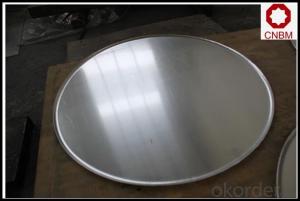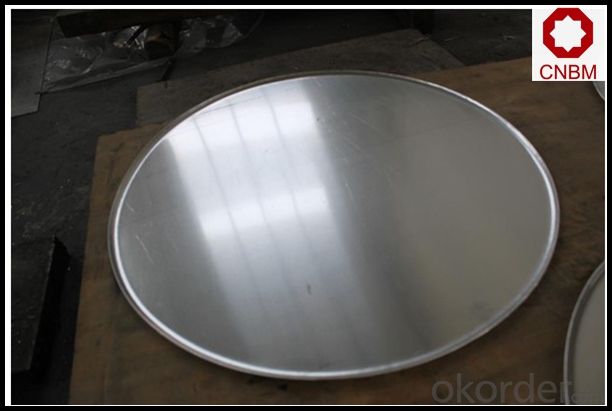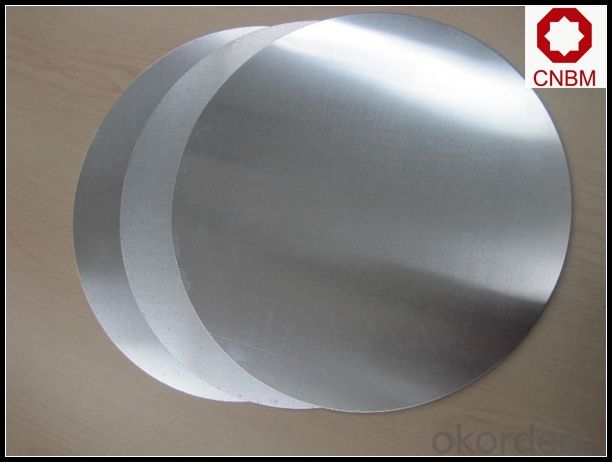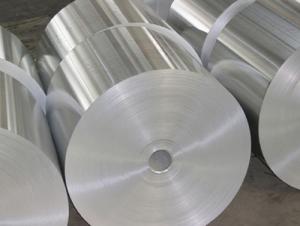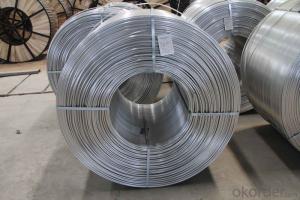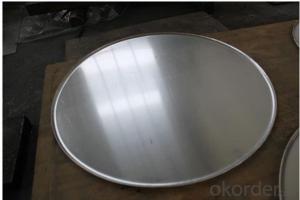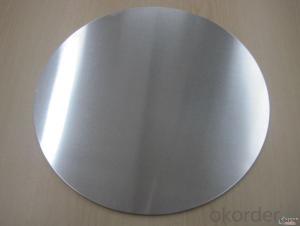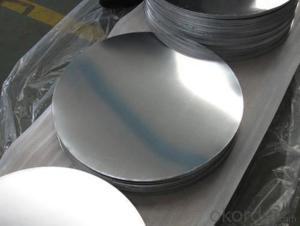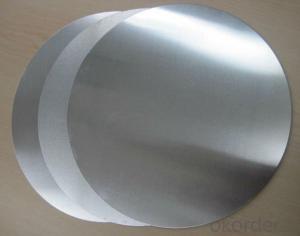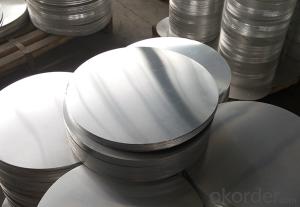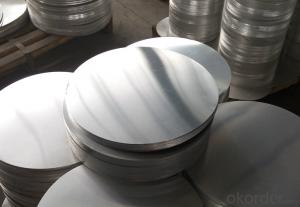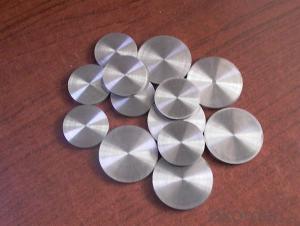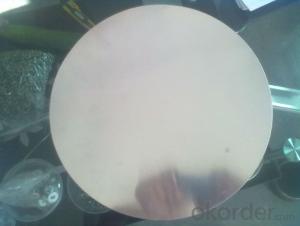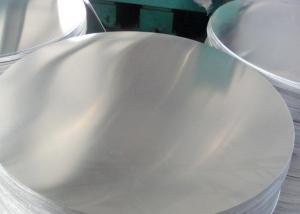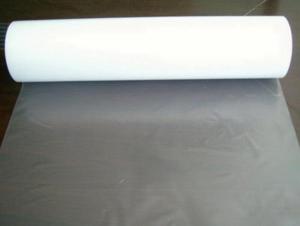Aluminum Hot Rolled Circle/Disc A1050 1060 O H12 for Cookware
- Loading Port:
- Shanghai
- Payment Terms:
- TT OR LC
- Min Order Qty:
- 5 m.t.
- Supply Capability:
- 1000000 m.t./month
OKorder Service Pledge
OKorder Financial Service
You Might Also Like
Specification
1.Structure of Hot rolled Aluminum Circle/Disc A1050 1060 O H12 for Cookware
(1)Alloy:1000series:1050 1060 1070 1100 1200 and other 1000series
3000series:3003 3004 and other 3000series
5000series:5005 5052 5754 5083 5086 and other 5000series
(2)Temper: O H H12 H14 H18 H24 H32 H34
(3)Thickness(mm):0.3-6.0mm
(4)Width(mm):50mm-1500mm
(5)Main application: Road signs,lighting,closures,Pan,cooking utensils, food processing equipment, storage tanks, truck and trailer components, aircraft components,
(6) Quality of material:
Totally free from defects like White Rust, Oil Patches, Roll Marks, Edge Damage, Camber, Dents, Holes, Break Lines, Scratches and free from circle set.
(7)Surface Finish:
Bright & smooth surface, without flow lines, slightly oiled to avoid White rusting
(8)Payment term:T/T,L/C
(9)Packing: Standard Export Packaging or According to Customers' Requirements
(10)Chemistry composition
Alloy | Si | Fe | Cu | Mn | Mg | Cr | Ni | Zn | Ti | Al |
1060 | 0.25 | 0.35 | 0.05 | 0.03 | 0.03 | --- | --- | 0.05 | 0.03 | 99.6 |
1050 | 0.25 | 0.4 | 0.05 | 0.05 | 0.05 | --- | --- | 0.05 | 0.03 | 99.5 |
1100 | 0.95 | 0.05-0.2 | 0.05 | --- | --- | --- | 0.1 | --- | 99.0 | |
1200 | 1.0 | 0.05 | 0.05 | --- | --- | --- | 0.1 | 0.05 | 99.0 | |
2.Main Features of the Hot rolled Aluminum Circle/Disc A1050 1060 O H12 for Cookware
• High manufacturing accuracy
• Smooth surface
• No waves
• High strength of extension and yield
• Well packaged
3.Hot rolled Aluminum Circle/Disc A1050 1060 O H12 for Cookware Images
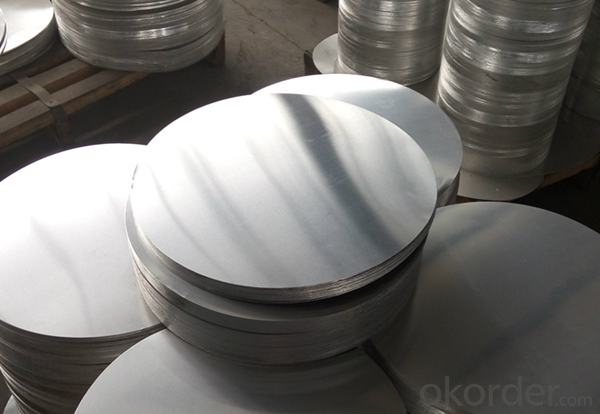
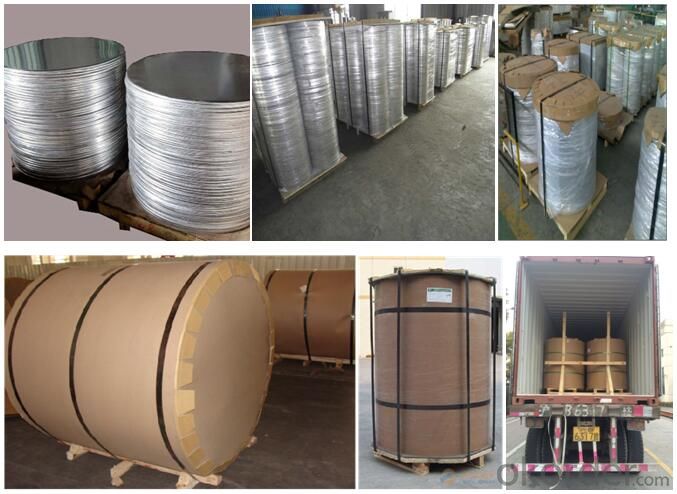
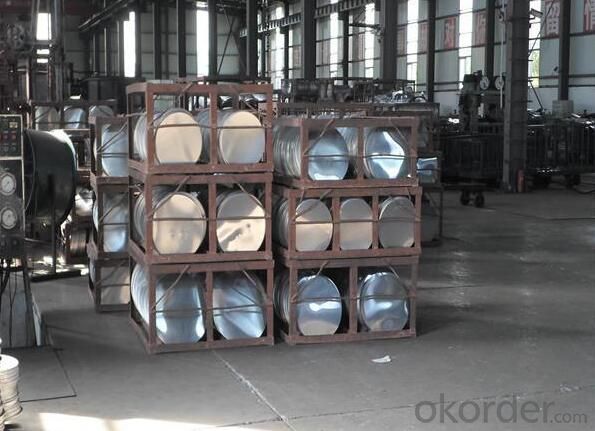
4.Hot rolled Aluminum Circle/Disc A1050 1060 O H12 for Cookware Specification
Alloy | AA1050,AA1060,AA1100 AA3003etc. |
Temper | O,H14 |
Thickness | 0.5MM-4MM |
Diagonal | 100-1200MM |
Standard | GB/T 3880-2006 |
5.FAQ of Hot rolled Aluminum Circle/Disc A1050 1060 O H12 for Cookware
We have organized several common questions for our clients,may help you sincerely:
①How about your company?
A world class manufacturer & supplier of aluminum coil and alloy blanks. Aluminum production base is comprised of 18 aluminum annealers, 10 coil and foil mills, 4 continuous production lines, 2 hot rolling production line and 3 prepainted lines.
Export 5000 tons per month to Asia, America and Middle East. Always do the best for our clients.
②Can you guarantee the quality of the products?
We are responsible for the quality of materials to get a long-term cooperation with clients in a reasonable period of time and we are glad to arrange and coordinate any third party inspection for you.
③What is the delivery time after purchase?
35 day after receiving client’s deposit or correct LC
5.Quality contral:
1. Professional Quality Control Team
v Inspecting ingot before melting
v Inspecting aluminium coil stock before cold rolling
v Inspecting finished goods before package
v Inspecting package, loading before shipment
2. Guaranteed by ISO 9001:2008 (SGS)
3. Guaranteed by FDA, EN 602, TPCH etc
- Q: This question asks if there is a risk of lead contamination from old aluminum cans when they are recycled into new food containers.
- <p>There is no risk of lead leaching from old aluminum cans into food during recycling. Aluminum cans are made of aluminum and do not contain lead. The recycling process involves melting and re-forming the aluminum, which effectively removes any potential contaminants. Lead was used in some can linings in the past, but modern food cans are lined with non-toxic materials. Therefore, recycled aluminum cans pose no lead leaching risk to food safety.</p>
- Q: This question asks for methods to protect aluminum from corrosion.
- <p>Aluminum corrosion can be prevented through several methods. One common approach is anodizing, which involves applying a protective oxide layer to the aluminum surface. This process enhances the metal's resistance to corrosion. Another method is using protective coatings such as paints or enamels that act as a barrier against corrosive elements. Cathodic protection, where aluminum is connected to a more easily corroded metal, can also be used. Additionally, ensuring proper design and avoiding contact with aggressive chemicals can minimize corrosion. Regular maintenance and inspection can help detect and address corrosion issues early.</p>
- Q: Can aluminum recycling be done in a closed loop system where the material can be reused indefinitely without loss of quality?
- <p>Yes, aluminum can be recycled in a closed loop system. Aluminum is one of the most recycled materials due to its ability to be recycled indefinitely without losing quality. When aluminum is recycled, it retains its properties, making it suitable for reuse in new products. The closed-loop recycling process involves collecting used aluminum products, melting them down, and then using the recycled material to manufacture new aluminum products. This process can be repeated over and over again, making aluminum recycling highly efficient and environmentally friendly.</p>
- Q: This question asks for the distinguishing characteristics of aluminum compared to other metals.
- <p>Aluminum is a lightweight, silvery-white metal that is the most abundant metal in the Earth's crust. It is known for its low density, making it one-third the weight of steel. It is highly malleable, ductile, and has excellent corrosion resistance due to the formation of a protective oxide layer. Unlike many other metals, aluminum is not magnetic and has good thermal conductivity. It is also non-toxic and can be recycled easily. These properties make aluminum distinct from other metals such as iron, copper, and lead, which have different densities, melting points, and chemical reactivities.</p>
- Q: Describe the process of aluminum oxide formation in a few sentences.
- <p>Aluminum oxide forms through a process known as oxidation, where aluminum reacts with oxygen in the air. This reaction is typically exothermic and can occur at room temperature, especially in the presence of moisture. When aluminum is exposed to oxygen, it forms a thin, protective layer of aluminum oxide on its surface. This layer prevents further oxidation and is what gives aluminum its corrosion resistance. In industrial settings, aluminum oxide can also be produced through electrolysis of aluminum oxide dissolved in molten cryolite.</p>
- Q: I would like to ask where there is a need for these minerals? How much is it per ton?
- Liaoning. Do you need silica there? If necessary, please leave your contact informationChasing the answerWe also have a lot here, you can go to the glass factory near you to contact, it is worthless, not enough freight
- Q: Is it possible to use aluminum as a material for battery production?
- <p>Yes, aluminum can be used to make batteries. Aluminum-air batteries are a type of metal-air battery where aluminum serves as the anode and undergoes oxidation. These batteries have a high energy density and are environmentally friendly, as they produce minimal waste. However, they face challenges such as water sensitivity and the need for alkaline electrolytes, which limit their practical applications. Research is ongoing to improve their performance and make them more viable for widespread use.</p>
- Q: Is it safe to use aluminum cookware for cooking food?
- <p>Yes, aluminum can be used to make cookware that is safe for cooking food. Aluminum cookware is widely used due to its lightweight, durability, and good heat conductivity. While there were concerns about aluminum's potential health effects, current research indicates that the amount of aluminum leached into food during normal cooking is minimal and not harmful to health. However, it's important to avoid using abrasive cleaners or utensils on aluminum cookware to prevent scratching, as this could increase the amount of aluminum that might be released into food.</p>
- Q: Explain the economic and job market implications of using aluminum.
- <p>The use of aluminum has significant impacts on the economy and job market. It is a key material in various industries, including construction, automotive, aerospace, and consumer goods, which drives demand and economic growth. Aluminum production and processing create jobs directly in mining, refining, and manufacturing sectors, and indirectly in related services and supply chains. Additionally, its lightweight and corrosion-resistant properties make it valuable for energy-efficient transportation, contributing to environmental sustainability and opening new job opportunities in green technologies. However, it also presents challenges such as the need for energy-intensive production processes and the management of waste, which require innovative solutions and can lead to job creation in recycling and environmental management.</p>
- Q: This question is asking for methods to effectively and safely clean aluminum surfaces without causing damage.
- <p>To clean aluminum surfaces effectively and safely, use a mild soap or detergent mixed with warm water. Avoid abrasive cleaners or tools that can scratch the surface. Gently scrub the surface with a soft cloth or sponge, and rinse thoroughly with clean water. For stubborn stains, consider using a specialized aluminum cleaner or vinegar solution. Always dry the surface immediately after cleaning to prevent water spots. Regular cleaning and maintenance will help prevent the build-up of dirt and grime, keeping your aluminum surfaces looking their best.</p>
Send your message to us
Aluminum Hot Rolled Circle/Disc A1050 1060 O H12 for Cookware
- Loading Port:
- Shanghai
- Payment Terms:
- TT OR LC
- Min Order Qty:
- 5 m.t.
- Supply Capability:
- 1000000 m.t./month
OKorder Service Pledge
OKorder Financial Service
Similar products
Hot products
Hot Searches
Related keywords
